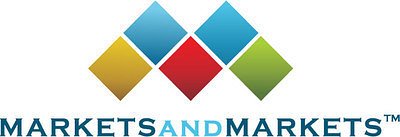
Smart Sensors Drive Growth in $9.36B Chemical Monitoring Market
Rising demand for safety, compliance, and process optimization is fueling rapid expansion in the chemical concentration monitor market, poised to reach $9.36 billion by 2030.
Smart Sensors Drive Growth in $9.36B Chemical Monitoring Market
The global chemical concentration monitor market is experiencing robust growth, driven by escalating demands for safety, regulatory compliance, and process optimization. Projected to reach $9.36 billion by 2030, the industry is witnessing a surge in adoption of ‘smart’ monitoring solutions, integrating advanced sensor technologies with data analytics and IoT connectivity.
According to a recent report, the market is fueled by a confluence of factors, including increasingly stringent environmental regulations, the need for enhanced product quality, and a growing emphasis on industrial automation. These demands are driving innovation in sensor technologies and creating opportunities for companies specializing in chemical monitoring solutions.
Technological Advancements: The Rise of ‘Smart’ Monitoring
The shift towards ‘smart’ industrial monitoring is a key trend shaping the market. Traditional manual monitoring methods are being replaced by automated systems that provide real-time data, enabling proactive decision-making and improved process control. Advanced sensor technologies, such as optical and ultrasonic sensors, are at the forefront of this transformation.
“The ability to continuously monitor chemical concentrations in real-time is critical for ensuring safety, optimizing processes, and maintaining product quality,” stated an industry analyst. “These ‘smart’ sensors provide a level of precision and control that was previously unattainable.”
Optical sensors, in particular, are gaining traction due to their high accuracy, sensitivity, and ability to detect a wide range of chemicals. These sensors utilize light-based techniques to measure chemical concentrations, offering non-destructive and highly reliable results. Emerging technologies like surface plasmon resonance (SPR) and Raman spectroscopy are further enhancing the capabilities of optical sensors.
In addition to sensor advancements, the integration of Artificial Intelligence (AI) and Machine Learning (ML) is revolutionizing data analysis. AI-powered algorithms can process vast amounts of data from sensors, identify patterns, and predict potential issues before they arise. This predictive maintenance capability is invaluable for minimizing downtime and optimizing operational efficiency.
Compliance and Safety: The Core Drivers of Growth
Stringent environmental regulations are a major force driving the adoption of chemical concentration monitors. Governments worldwide are implementing stricter rules regarding emissions, wastewater discharge, and chemical handling, forcing industries to invest in advanced monitoring solutions to ensure compliance.
Industries such as pharmaceuticals, water treatment, and food processing are particularly sensitive to regulatory requirements. These sectors rely heavily on precise chemical monitoring to ensure product safety, maintain quality control, and meet stringent standards set by regulatory bodies like the EPA and FDA.
The demand for enhanced safety is another key driver. Chemical spills and leaks can have devastating consequences, both environmentally and economically. Advanced monitoring systems provide early warning signals, enabling rapid response and minimizing potential damage. “Real-time monitoring isn’t just about compliance; it’s about protecting people and the environment,” a safety consultant commented.
Asia Pacific: The Epicenter of Market Growth
The Asia Pacific region is emerging as the fastest-growing market for chemical concentration monitors. Rapid industrialization, urbanization, and a burgeoning manufacturing sector are fueling demand for advanced monitoring solutions.
China, in particular, is a major driver of growth. The country’s ambitious industrialization plans and increasing focus on environmental protection are creating significant opportunities for chemical monitoring companies.
“Asia Pacific is experiencing a period of unprecedented industrial growth, and this is driving demand for advanced monitoring technologies,” an industry expert noted. “The region is becoming the epicenter of the chemical concentration monitor market.”
Investments in infrastructure development and stricter environmental regulations in countries like India, Japan, and South Korea are also contributing to market growth. The region’s growing middle class and increasing awareness of environmental issues are further driving demand for safer and more sustainable industrial practices.
Challenges and Future Outlook
Despite the positive outlook, the chemical concentration monitor market faces some challenges. High upfront costs, the need for skilled personnel to operate and maintain complex systems, and the integration of data from multiple sources can be barriers to adoption.
However, ongoing innovation in sensor technology, decreasing costs, and the increasing availability of cloud-based data analytics platforms are addressing these challenges.
The future of the chemical concentration monitor market is bright. The industry is poised for continued growth, driven by the increasing demand for safety, compliance, and process optimization. The integration of AI, ML, and IoT technologies will further enhance the capabilities of monitoring systems, creating even more opportunities for innovation and growth.
“The chemical concentration monitor market is undergoing a significant transformation,” an industry analyst concluded. “We are moving towards a future where real-time data, predictive analytics, and automated control are the norm. Those who embrace these technologies will be well-positioned to succeed in this dynamic market.
